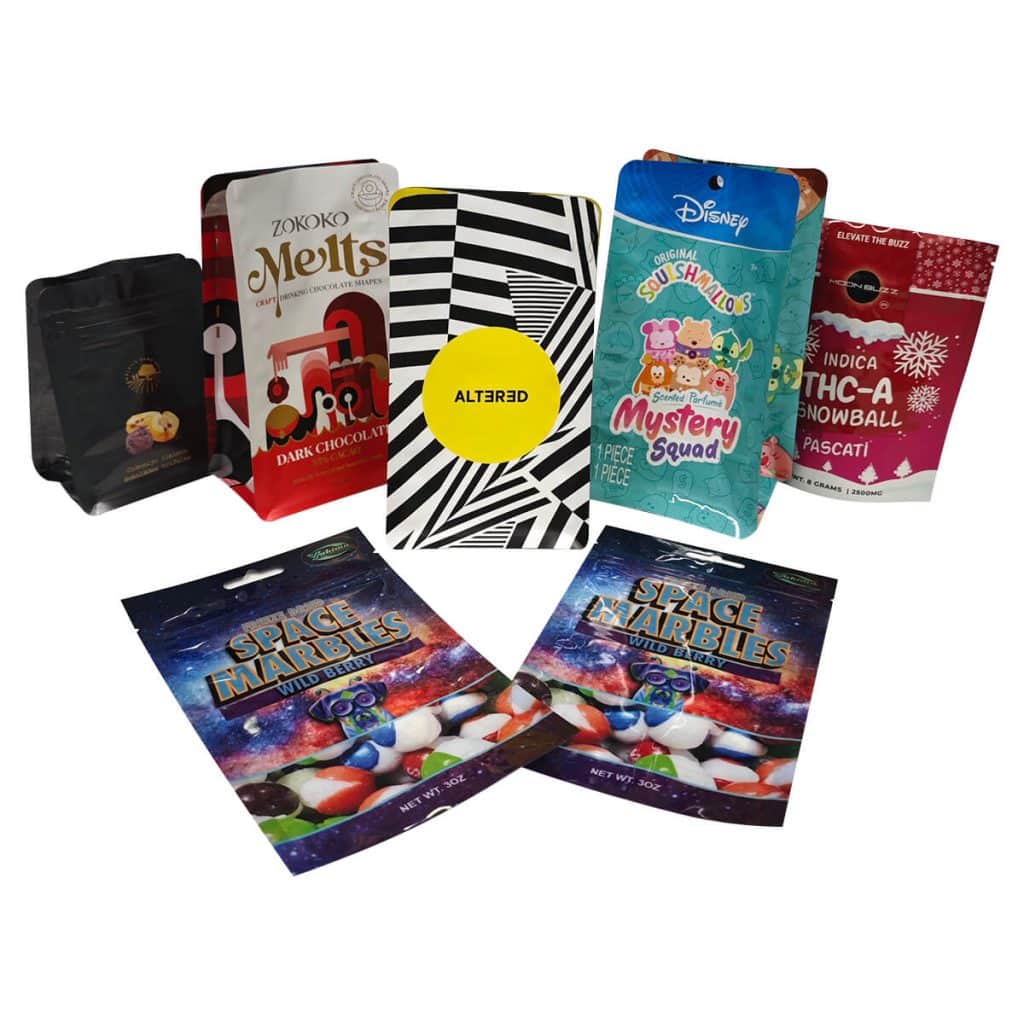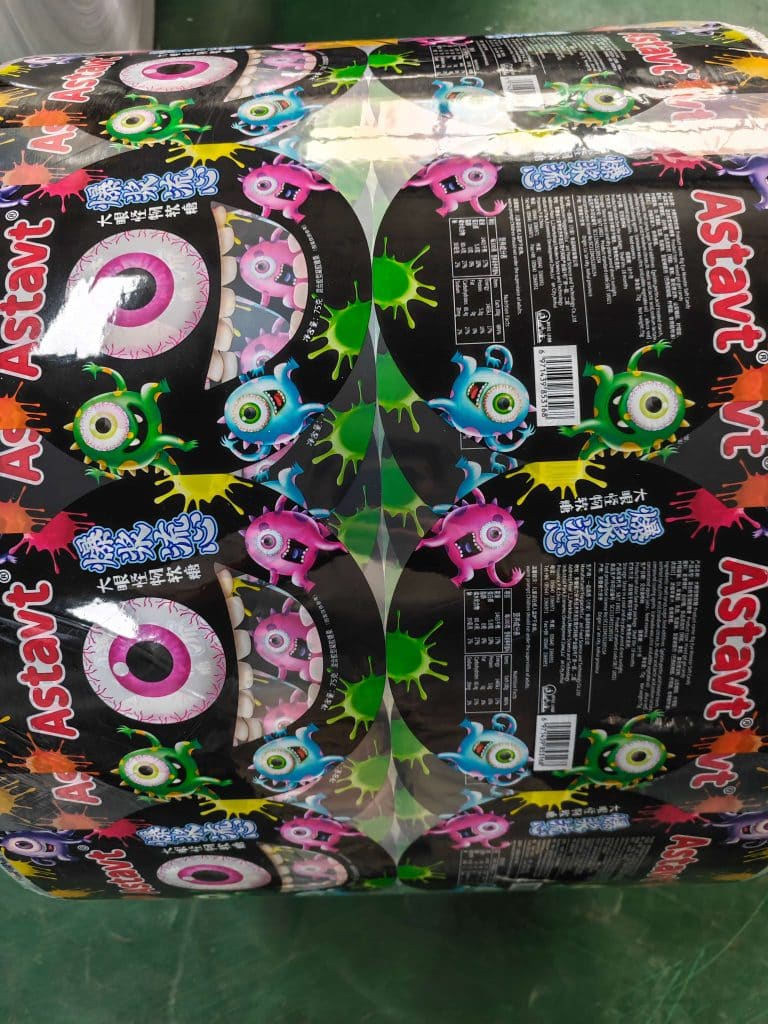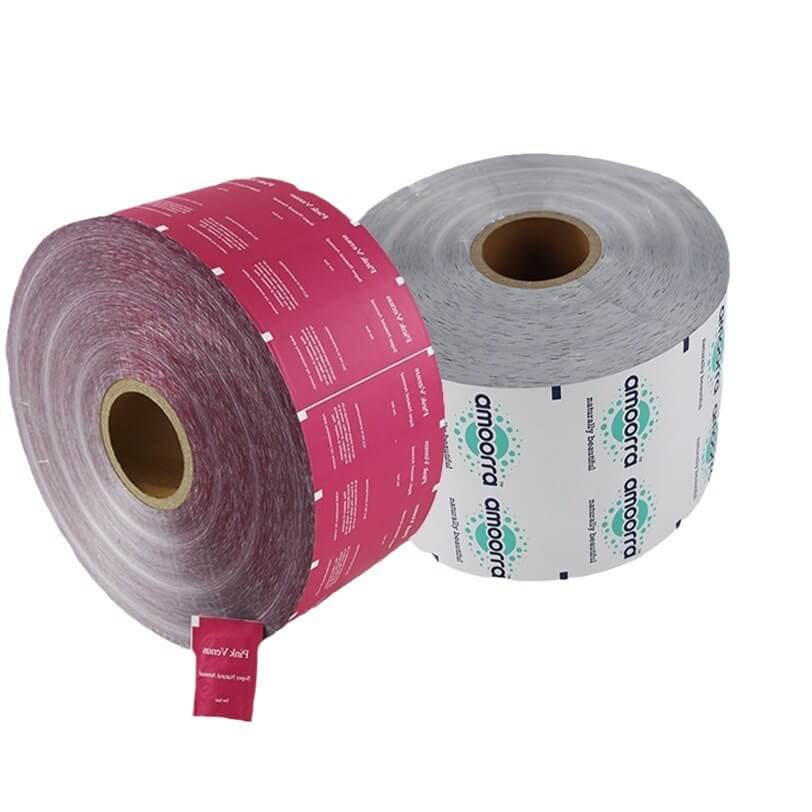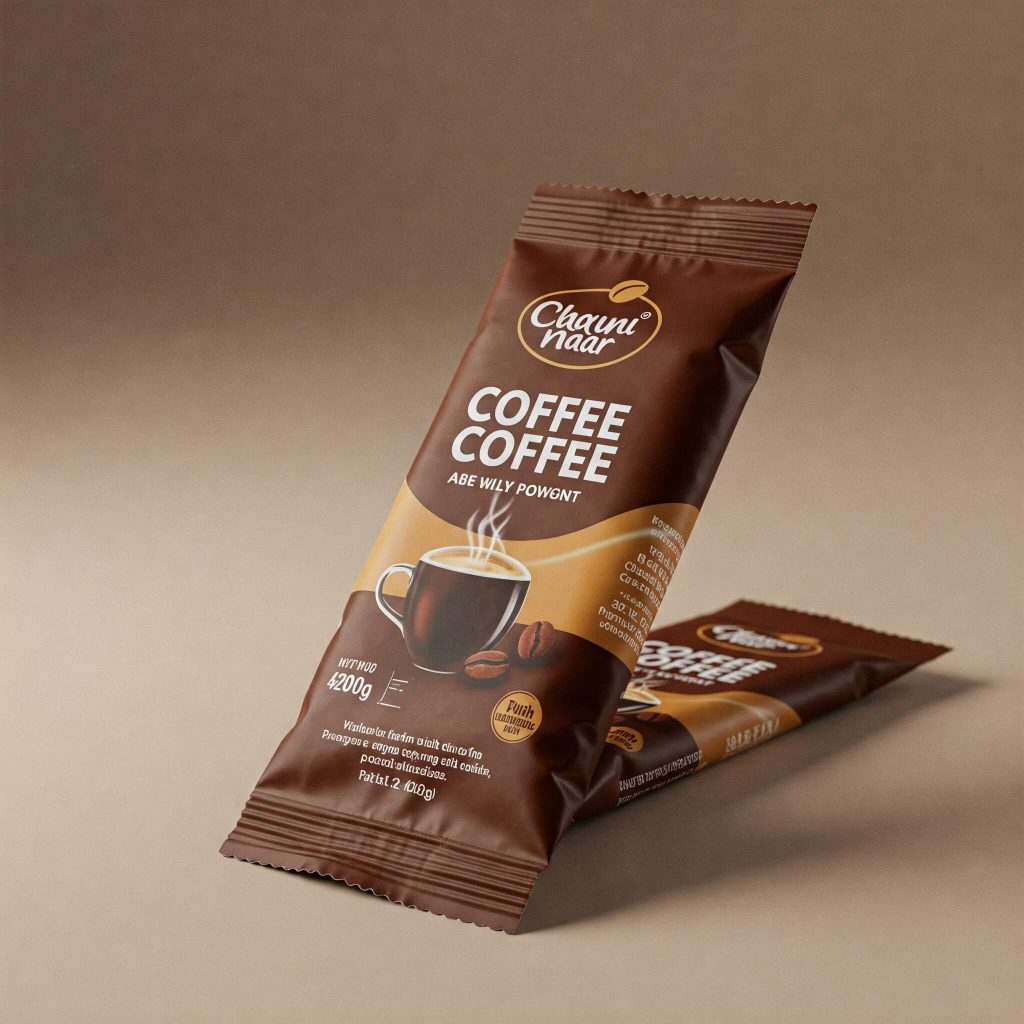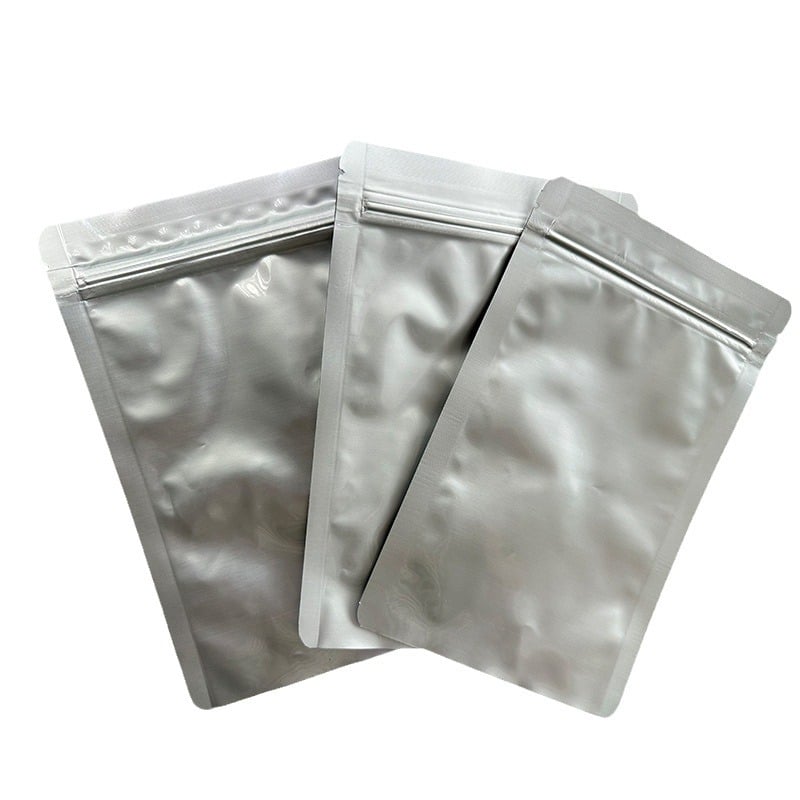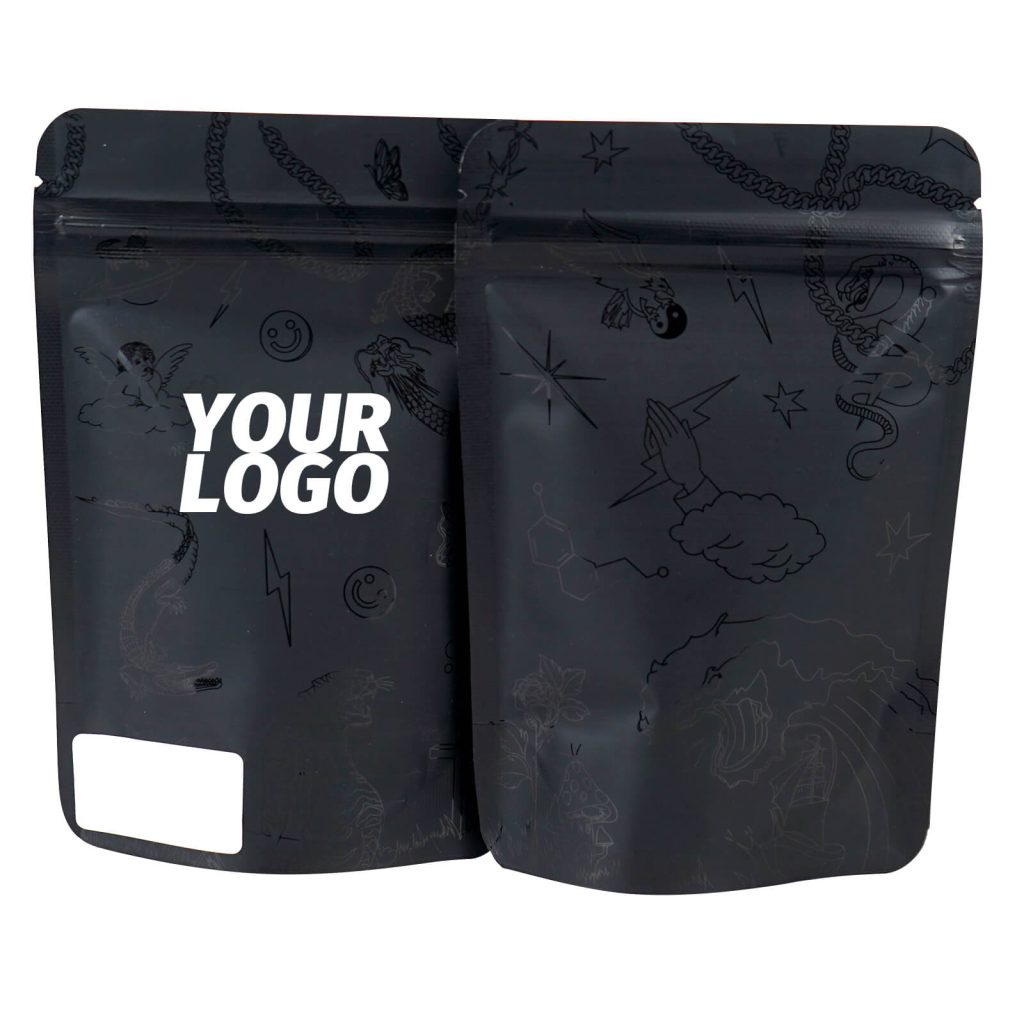Introducing Flexible Film Packaging
Flexible film packaging uses one or more layers of plastic film that can be printed with designs.
It can stretch, flex, and form contents unlike plastic boxes or glass jars. Example: plastic wrap, grocery bags, food bags.

Why does flexible film packaging matter?
Meeting modern needs
Food bags and medicinal wraps are customizable with flexible films. Packaging Gateway reports that 65% of manufacturers employ smart films with temperature indicators or QR codes for traceability. The future of flexible film packaging
Flexible films will dominate modern packaging as companies prioritize sustainability and efficiency. With global need for practical, eco-friendly solutions, recyclable materials and smart technologies will develop the business.
Affordable and lightweight
Flexible film is 80% lighter than rigid packaging and saves money on transportation. The EPA reports that lightweight packaging can cut bulk transportation fuel consumption and carbon emissions by 15-20% (EPA, 2022).
Increase product shelf life
Food stays fresh with flexible films limiting air, moisture, and germs. According to the FDA (2023), modified atmosphere packaging (MAP) sheets can improve produce shelf life by 2-5 days, minimizing food waste. The food sector needs this technology because 30-40% of products decay before consumption (FAO, 2021).
Green innovation
Industry grows with sustainable choices. Popular biodegradable films include maize starch. Grand View Research expects the worldwide biodegradable flexible packaging market to increase 12.3% yearly between 2023 and 2030 due to customer demand for eco-friendly alternatives.
Advantages of Flexible Film Packaging
Flexible film packaging is durable, flexible, and cost-effective. Its ability to adapt to product shapes, protect commodities, and reduce costs makes it popular across sectors. Industry data supports these benefits.
Flexible and Versatile
Flexible films are ideal for customizing patterns for any product size or shape. Food pouches and odd-shaped cosmetics can be wrapped. Flexible polyethylene (PE) can stretch without tearing. Flexibility reduces design constraints and production costs, so 75% of manufacturers prefer flexible packaging films (Flexible Packaging Association, 2023).
Lightweight, Portable
Flexible 0.1-0.5 mm films are lightweight and strong. This greatly reduces shipping weight. Flexible packaging reduced private-label transportation costs by 18% at Walmart (Walmart Sustainability Report, 2022). E-commerce benefits from their portability because smaller, lighter packages improve warehousing efficiency.
Protective barrier
Flexible films resist oxygen, moisture, and pollutants. Advanced coatings like metallized polyester block 99% UV and 95% oxygen, improving product safety. The FDA (2023) says barrier films reduce food packaging contamination by 70%.
Longer Shelf Life
Flexibility films preserve product quality, reducing waste. Modified environment packaging (MAP) films extend fruit shelf life by 2-5 days. Global retail food waste is reduced by 30%, according to the UN Food and Agriculture Organization (FAO, 2021).
Custom Branding Printing
Bright, high-resolution printing on flexible films boosts brand visibility. Custom films are used by Nestlé to print logos and instructions on packaging. The Packaging Institute (2023) reports that 68% of consumers choose appealing packaging.
Conclusion
Flexible film packaging meets modern cost-saving and sustainability needs. It leads innovation with its flexibility, durability, and adaptability.
Types of Flexible Film Packaging
Different types of flexible film packaging can be used for different materials and industries. Food safety and industrial durability are customized with these films. Here are the most common roll film types and their uses.
LLDPE
Strong tensile strength and flexibility make it puncture- and stretch-resistant.
PE bags, stretch wrap, bubble wrap, and agricultural films are common uses.
The global LLDPE market consumes 35% of polyethylene (Grand View Research, 2023).
LDPE
LDPE is transparent, flexible, and heat-sealing. Soft, low-barrier, clear LDPE film.
Shopping bags, shrink wrap, and squeeze bottles.
In 2022, the packaging industry consumed 40% of 18 million metric tons of global LDPE production (Statista, 2023).
HDPE Strength
HDPE is highly resistant to environmental stress, cracking, low temperatures, aging, and corrosion.
In detergent bottles, milk jugs, and industrial liners.
The global HDPE market is worth $65 billion and growing at 5.2% annually, driven by construction and automotive demand, according to Plastics Europe (2023).
Propylene
PP is strong, tear-resistant, stiff, heat-resistant (up to 160°C), and versatile, making it ideal for reusable packaging.
Used in auto parts, pharmaceutical foils, and yogurt cups.
Food packaging innovations are expected to drive 6.8% compound annual growth in the PP film market by 2030 (SABIC, 2023).
Polyester-laminated films
Superior strength, moisture, and oxygen resistance. Laminated films strengthen printed materials.
For snack packaging, pharmaceutical foils, and industrial barriers.
Polyester films dominate high-barrier packaging with 45% (Flexpak, 2023) due to their durability.
Antifog Film PET
Keeps product clear in wet conditions by preventing condensation. Soft and impact-resistant · Flat enough
Fresh produce, meat, and pharmaceutical blister packaging.
Food Processing Magazine (2023) found that anti-fog films reduce perishable food waste by 25%.
Barrier Films
Resists gases, UV, and chemicals.
Essential for electronics, medicine, and luxury goods.
Flexible Packaging Bag Features
Flexible packaging bags improve usability, product quality, and consumer needs. Features such as handles, tear notches, valves, and windows make them a practical choice for various industries. We detail these features below.
Handles and Tear Notches User-Friendly Design:
Handles make carrying bulk items like pet food or laundry detergent easier.
With tear notches, users can open packages quickly without tools, reducing waste.
Data: Tear notches in bags reduce opening time by 50%, enhancing customer satisfaction. According to Food Processing Magazine (2023), 70% of consumers prefer tear-away packages for convenience.
Valves and One-Way Degassing Freshness Preservation:
To prevent spoilage, valves allow gases like CO₂ in snacks to escape while blocking external air.
Maintaining flavor in coffee pouches and cheese packaging requires one-way degassing.
Data: Valved bags increase perishable shelf life by 30% (Flexible Packaging Association, 2023).
Windows and Custom Shapes Aesthetic Appeal:
Windows with clear or frosted film allow customers to view product quality, such as baked goods or flowers.
Boost recognition with custom shapes that match branding.
Research indicates that retail sales increase by 20% for packages with windows (Packaging Institute, 2023).
Flexible Film Packaging Uses
Flexible film packaging can be used to package many products in many industries. It makes packaging pouches and food products easy, especially with flexible packaging machines.
Here are its main uses and industries.
Food and Drink Industry
Food safety and freshness depend on flexible films. Fresh produce, snacks, and drinks are wrapped. Example:
By replacing oxygen with nitrogen or carbon dioxide, Modified Atmosphere Packaging (MAP) preserves salads and meats.
Films that resist moisture prevent freezer burn in frozen foods.
Flexible films are used for 45% of food packaging, and MAP films can reduce global food waste by 30%.
Drugs
The pharmaceutical industry uses flexible films for blister packs, surgical orders, and pouches.
Pharmaceutical tablets, powders, granules, pastes, and liquids are packaged in it.
The main job:
Moisture and oxygen barriers protect sensitive drugs.
Tamper-resistant seals protect patients and comply with regulations.
Retail and consumer goods
Retailers use flexible films for branding, protection, and convenience.
Shrink wrap protects consumer goods pallets during transport.
Reusable bags make coffee and pet food more reusable.
They can package snacks, pastries, and frozen foods.
Environmental impact of flexible film packaging
Flexible film packaging’s environmental impact has changed due to sustainability and environmental concerns.
Though efficient, its production, disposal, and recycling are controversial. It’s impossible to dispose of flexible plastic film. Flexible plastic films are lightweight, cheap, and contaminated with cooking oil, making huge amounts of high-quality material hard to recycle.
Biodegradable flexible films are recyclable.
Biodegradability/Recyclability
Flexible films like PE and PP are thin and coated with mixed materials, making recycling difficult. Advances in technology improve sustainability:
Although 30% of U.S. PE film is recycled, food waste contamination remains a problem (EPA, 2023).
Consider biodegradables. Films made of cornstarch degrade in 90-180 days. The global biodegradable packaging market will grow 12.3% annually through 2030 (Grand View Research, 2023).
Waste and carbon reduction
Recyclable plastics, monolayer construction, and compostable films protect the environment.
Lightweight packaging cuts transportation fuel use and emissions by 50%. Walmart’s flexible film production reduced emissions by 15% (Walmart Sustainability Report, 2022).
Films that extend food shelf life reduce global food waste, which emits 8% of greenhouse gases (FAO, 2021).
Selecting flexible film packaging
Choose flexible film packaging that meets your product packaging needs.
Understanding product requirements, material properties, and budget constraints are crucial. Actionable tips for your decision are below.
Assess Product Needs
First, we must determine the unique requirements of the product. We must identify the characteristics of the rolls of film we are using, including their physical properties, such as temperature resistance and puncture resistance.
To ensure that the film we buy fits our machines, we must know their sizes.
Moisture/Oxygen High-barrier film on fresh produce and electronics keeps moisture and air out.
Weight and shape: HDPE can support heavier items than polyethylene (PE), which is good for small items.
To prevent damage, 65% of manufacturers prioritise material compatibility with product moisture levels (Packaging Institute, 2023).
Assess Materials
Compare durable, affordable, and sustainable materials: Know the roll film properties needed to package our products.
Polyethylene (PE): cheap and flexible but weak in water.
Heat-resistant polypropylene (PP) is ideal for reusable packaging.
Plant-based biodegradable film reduces environmental impact.
Cost and availability
Wholesale purchases are very cost-effective.
Bulk purchasing: Statista (2023) reports 20-30% cost savings for orders over 10,000 pieces.
Reliability: Make sure local suppliers have your materials to avoid delays.
Conclusion
In summary, flexible film packaging offers advantages like cost-efficiency (reducing shipping costs by 30% per EPA), lightweight design, and sustainability through biodegradable options (EPA, 2023). However, considerations include recycling challenges and material compatibility with products. While 65% of manufacturers prioritize eco-friendly films, biodegradable options grow at 12.3% annually (Grand View Research, 2023). By balancing innovation with practicality, businesses can enhance efficiency and brand appeal while supporting environmental goals. Adopt flexible films today to stay competitive!

